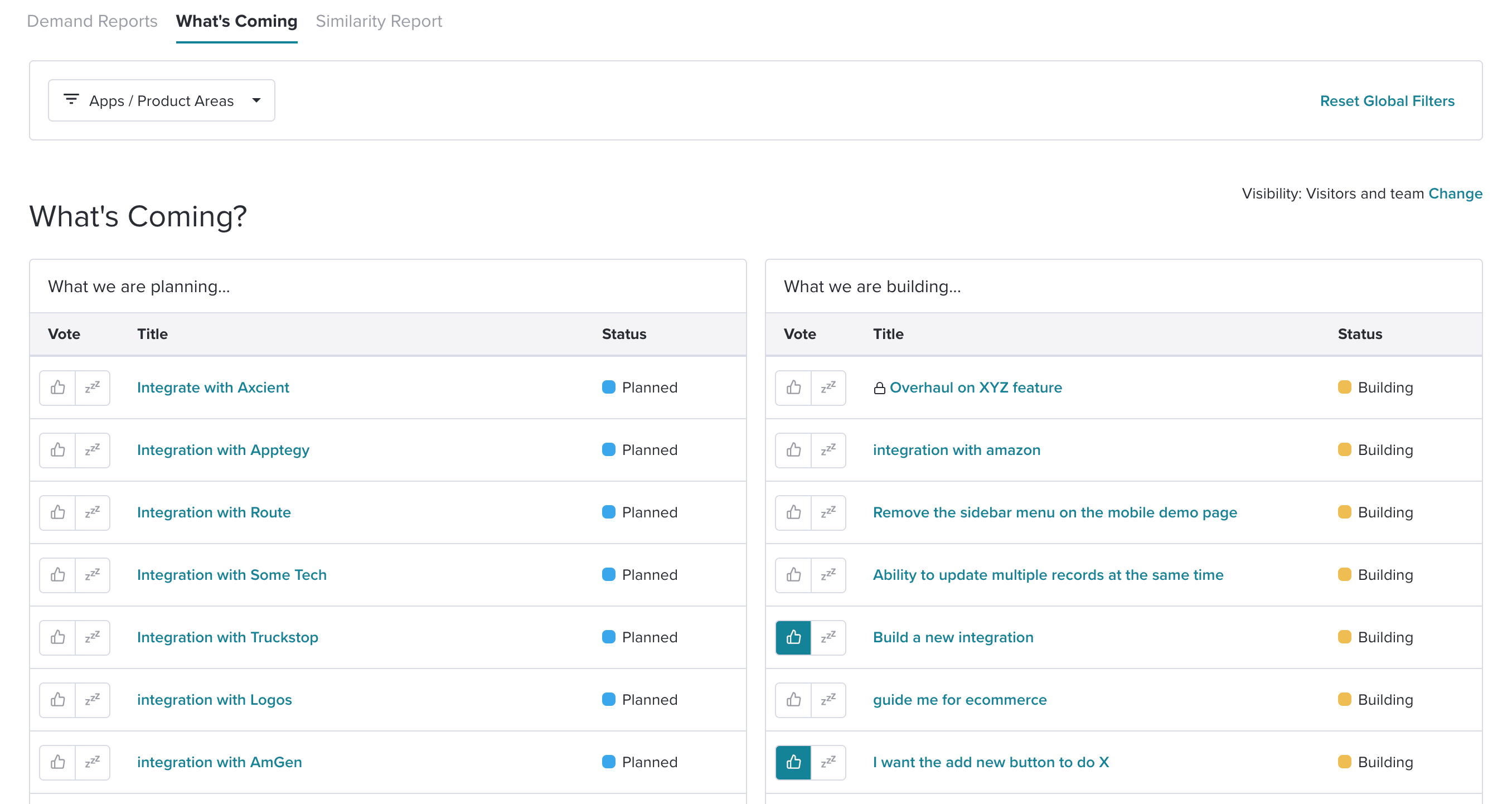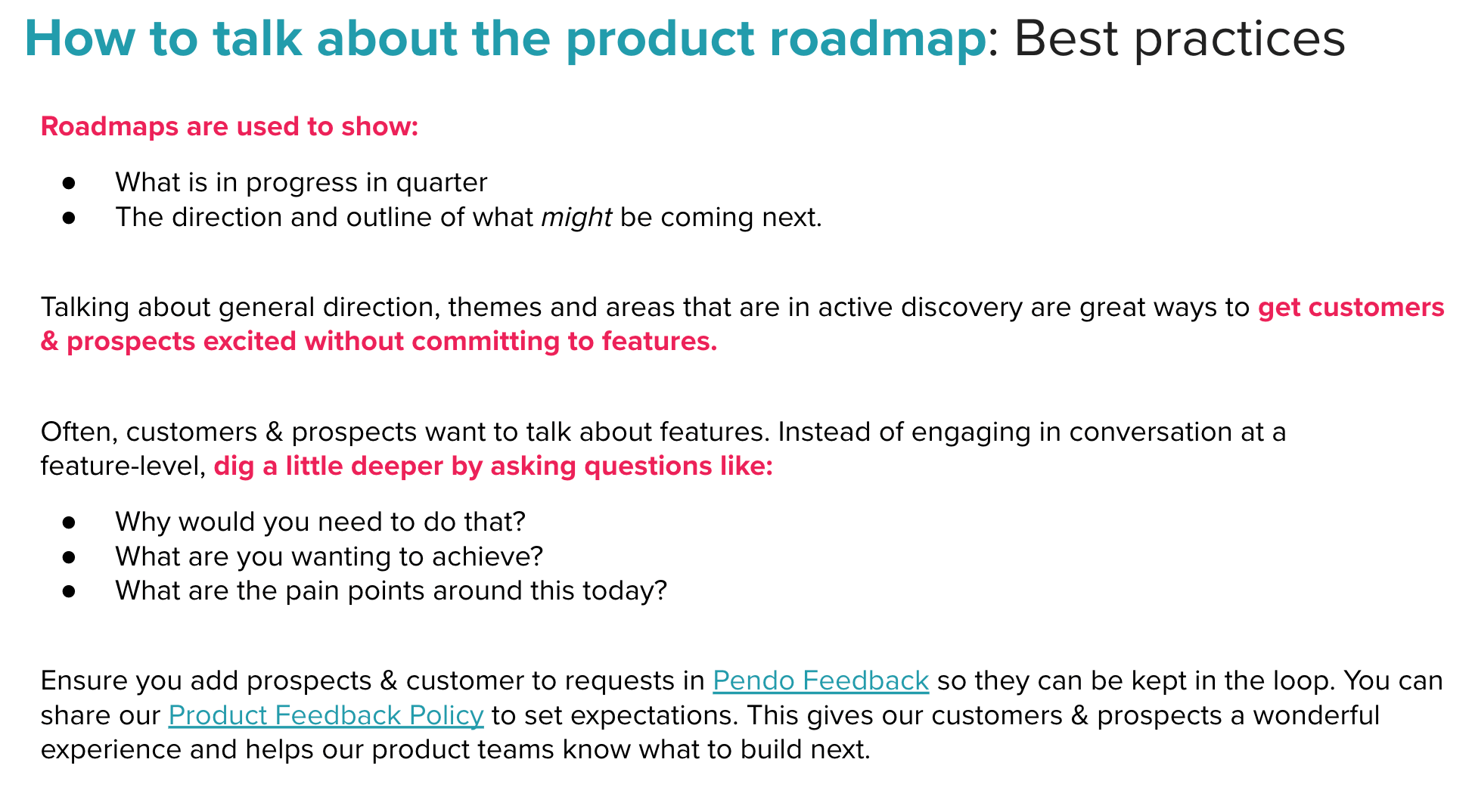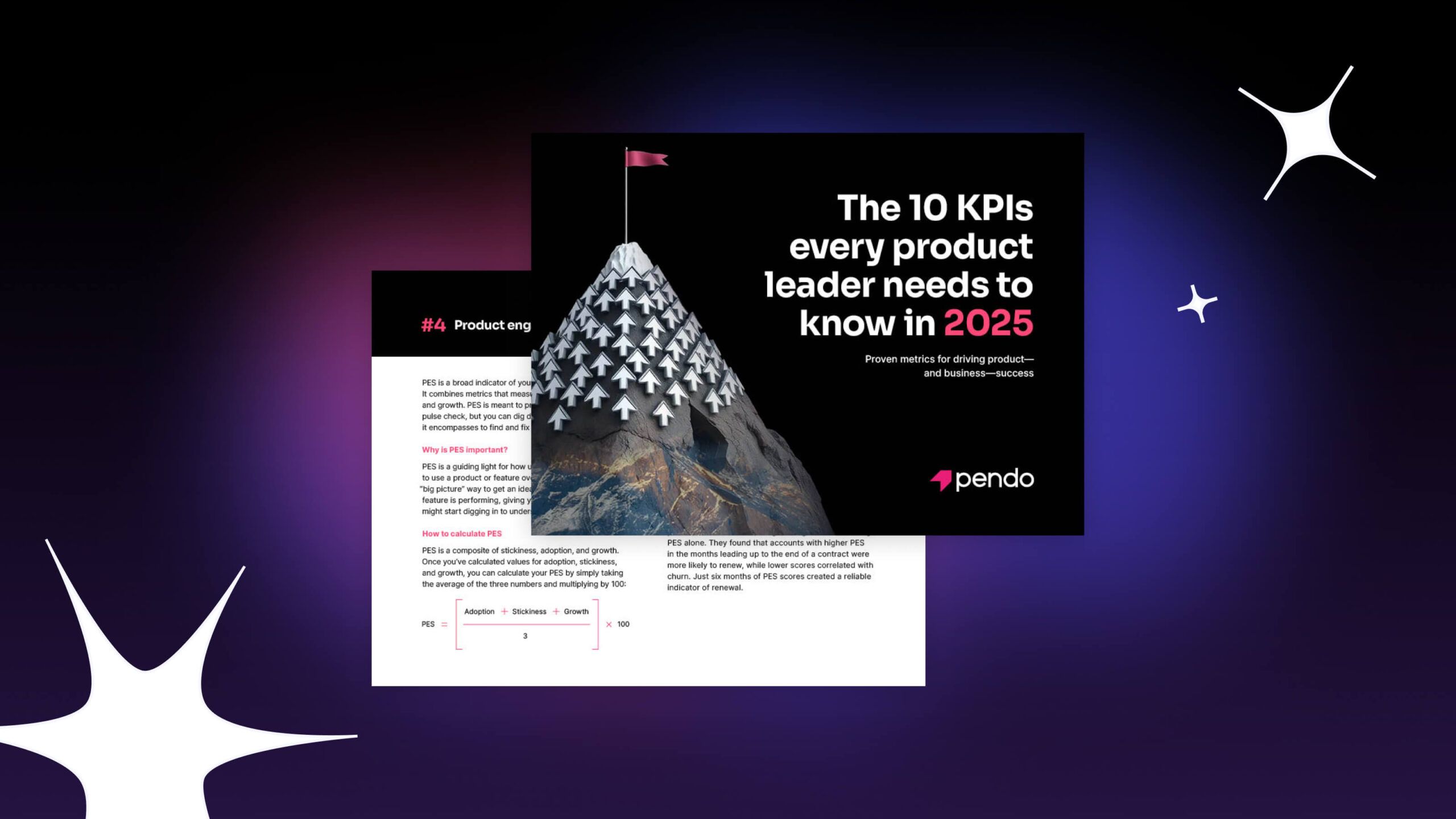Roadmap your way to success: How to communicate the product roadmap
While understanding your company strategy and bringing solid data to your roadmap decisions is a huge part of creating a successful product roadmap, the other half of the job is communicating it clearly to your internal teams and external customers.
As a follow up to our last post about the data that should inform your roadmap, we’re sharing more takeaways from our latest webinar on roadmapping best practices. Below, I walk through some tips for communicating the product roadmap.
Roadmap communication can take many forms and it differs widely between companies. For example, some companies will have public roadmaps while others choose to share a roadmap on a strictly “need to know” basis. There is no right or wrong here, but there are a couple learnings that apply to all circumstances.
1. Consider your audience
When it comes to the product roadmap, different stakeholders will need slightly different information from you. Making small changes to fit your audience can make a big difference in ensuring each group feels informed on the topics that matter most to them. Here are some examples and best practices that might work for you:
Roadmap for leadership: Keep roadmap items high level and show which company goals each project ladders up to where applicable. It’s also important to think about your planning cadence. At Pendo, we show planned activity for the next three months, which fits well with our quarterly planning structure.
Roadmap for your customers: Every organization has a different level of comfort when it comes to sharing roadmap information with customers. Best practices include not sharing hard dates, and things like your company goals won’t be applicable here. If you don’t want to share a full roadmap, think about sharing a list of what is currently being built and what you have planned; this can be a great way to create alignment and excitement without sharing too much. For some organizations, a full roadmap can work well–just make sure you are careful about the expectations you’re setting (we all know how quickly roadmaps can change!).
Roadmap for other teams: The roadmap you create for leadership can also work well for sharing with the company more broadly, but you might want to make changes to support specific teams. For example, it’s useful to give your customer success and sales teams more information on general direction so they can speak to your roadmap at a high level.
2. Train customer-facing teams on how to speak to the roadmap
Beyond creating a specific roadmap for other departments to utilize, product teams should also invest time in creating alignment with customer and prospect-facing teams. If you arm them with the right information, these teams can be a really helpful extension of the product team, helping to reduce the time you spend answering one-off roadmap questions.
Instead of just handing a roadmap off and calling it done, take the time to properly train your sales and customer success teams on how to speak to the roadmap. Which areas are the most important to call out? How should they handle questions about specific roadmap items? Thinking about this ahead of time will only help your team in the long run.
How we communicate the roadmap at Pendo
At Pendo, we’ve employed several roadmap tactics that have worked well for us. To start, we have roadmaps for leadership and internal teams that show how roadmap items align with our company goals, and we also share a high-level list of “What we are planning” and “What we are building” with our customers. All of this data lives inside Pendo Feedback, so our internal teams and external customers automatically see any updates from the product teams.

We also train our customer success and sales teams on how to talk to the product roadmap effectively. Here’s a real example taken from an enablement deck:

Note that we link to our Product Feedback Policy and ensure that teams are entering all data into Pendo Feedback for our product teams. By centralizing all of this feedback data, we are able to show how and why we came to our roadmap decisions. Here’s an example from a recent Slack announcement, where the product team shared the data they gathered including the number of customers and prospects who wanted a request and the associated value:

Tips for communicating the product roadmap
To recap, when you are thinking about how to communicate the product roadmap, consider:
-
- Giving everyone a single place to access the roadmap to keep all stakeholders aligned
- How you might need to slightly change your roadmap based on your audience
- Enabling the sales and success teams to speak to the roadmap to create an extension of the product team
- Your feedback process. Having a solid Product Feedback Policy in place creates confidence and consistency
If you want help thinking about your roadmap strategy, the sources of data that will inform your roadmap, and how to communicate it effectively, grab our free worksheet. Happy roadmapping!
Want to watch the full webinar? Check out the recording here:




